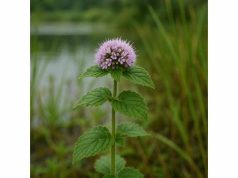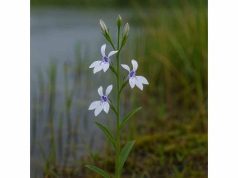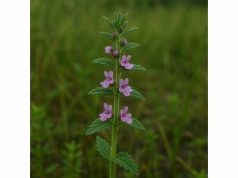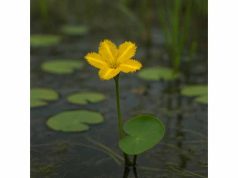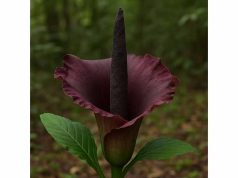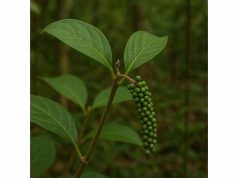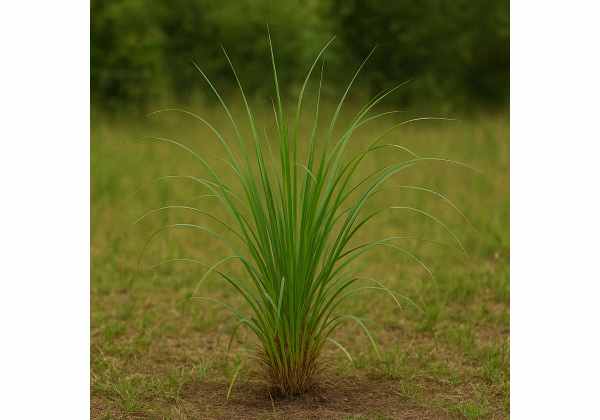
Vetiver (Chrysopogon zizanioides) is a fragrant perennial grass native to India, celebrated for its deeply rooting habit and rich aromatic profile. Its essential oil and hydrosol contain potent sesquiterpenes—such as khusimol, vetiselinenol, and vetiverol—alongside flavonoids and phenolic acids, which confer anti-inflammatory, antioxidant, and antimicrobial effects. Traditional medicine harnesses vetiver’s calming, cooling, and regenerative properties to ease stress, support skin healing, alleviate digestive disturbances, and promote circulatory health. From fragrant perfumery and soothing teas to topical balms and environmental applications, vetiver’s multifaceted virtues have earned it a cherished place in wellness, aromatherapy, and ecological restoration worldwide.
Table of Contents
- Botanical Profile and Habitat
- Phytochemistry and Key Actives
- Health Advantages and Core Properties
- Applications and Precautions
- Research Insights and Findings
- FAQ
Botanical Profile and Habitat
Vetiver, scientifically known as Chrysopogon zizanioides, belongs to the Poaceae (grass) family and thrives as a robust perennial tussock grass. Characterized by its tall, slender stems—reaching heights of 1.5 to 2 meters under ideal conditions—vetiver forms dense clumps of long, narrow leaves that can exceed 1 meter in length and about 1.5–2 centimeters in width. The leaves are stiff, rough to the touch, and arranged alternately along erect culms. In late summer, vetiver produces loose, feathery inflorescences—panicles bearing spikelets—that range in color from green to purplish hues, often extending beyond the foliage for seed dispersal by wind and animals.
Taxonomy & Origins
- Kingdom: Plantae
- Order: Poales
- Family: Poaceae
- Genus: Chrysopogon
- Species: C. zizanioides
Native to India’s subtropical and tropical regions, vetiver has been cultivated for over 2,000 years for its aromatic roots and soil-stabilizing capabilities. Portuguese colonizers spread it throughout Southeast Asia, Africa, and the Americas by the 19th century, recognizing both its erosion-controlling potential and fragrant properties.
Root System & Soil Stabilization
Vetiver’s most remarkable trait is its extensive, vertical root network, which can penetrate up to 3–4 meters deep. These thick, mat-forming roots anchor soil, reduce erosion, and improve soil structure by creating subterranean channels that enhance water infiltration. Farmers often plant vetiver in hedgerows along contours to control runoff and rebuild degraded soils. Its tolerance for heavy metals also makes it an effective phytoremediator in contaminated lands.
Climate & Cultivation Conditions
- Climate: Prefers tropical and subtropical climates; tolerates temperatures from 10 °C to 45 °C.
- Rainfall: Thrives in regions receiving 1,000–2,000 mm annual precipitation; exhibits drought tolerance once established.
- Soil Requirements: Adapts to a wide range of soils—clay, loam, sandy—provided they are well-drained; can grow in saline and acidic soils, though optimal oil yield occurs in fertile, neutral pH.
- Sunlight: Full sun optimizes growth and oil production; partial shade reduces vigour and aromatic compound synthesis.
Propagation & Harvest
Vetiver is propagated vegetatively via root slips or “tillers,” as seeds exhibit low germination rates. Slips are planted at 30–50 cm spacing in trenches or pits, where they quickly establish. Harvesting occurs 10–24 months after planting, once root biomass and essential oil accumulation peak. Roots are dug, washed to remove soil, and air‑dried or fractionally distilled to extract oil and hydrosol.
Ecological Contributions
Beyond erosion control, vetiver hedges create vibrant habitats for beneficial insects and small wildlife. The deep roots sequester carbon, contributing to climate mitigation. Agroforestry systems integrate vetiver for soil fertility, moisture retention, and as a windbreak.
Phytochemistry and Key Actives
Vetiver’s therapeutic outcomes stem from a complex chemical profile dominated by sesquiterpenes, sesquiterpenols, flavonoids, and phenolic acids. Below is an exploration of its principal active constituents:
- Sesquiterpene Alcohols
- Khusimol & Verticiol: Impart the deep, earthy aroma; exhibit potent anti-inflammatory and antioxidant actions via COX and LOX inhibition.
- Vetiverol & Isovalencenol: Support neuroprotective pathways and modulate GABAergic transmission, promoting relaxation.
- Sesquiterpene Hybrids
- β-Vetivone & α-Vetivone: Add woody, smoky undertones; contribute mild antimicrobial properties.
- Zizanoic Acid Derivatives: Offer antiulcer and hepatoprotective benefits by enhancing mucosal defenses and promoting liver enzyme balance.
- Flavonoids (e.g., Quercetin, Kaempferol)
- Serve as antioxidants scavenging reactive oxygen species; help maintain vascular integrity and reduce capillary fragility.
- Phenolic Acids (Caffeic Acid, Chlorogenic Acid)
- Possess both antioxidant and antimicrobial effects; support circulatory health through endothelial protection.
- Mucilage & Polysaccharides
- Provide demulcent actions, forming protective films over mucous membranes in respiratory and digestive tracts.
- Minerals & Micronutrients
- Roots contain trace minerals—potassium, magnesium, calcium—that may contribute to electrolyte balance when used as hydrosol.
Synergistic Mechanisms
Essence extraction via hydro-distillation captures both volatile oils and hydrosol-bound actives; tinctures and decoctions yield water-soluble compounds like phenolics and mucilage. This multi-method approach ensures a broad spectrum of efficacious constituents for diverse applications across internal and topical formulations.
Health Advantages and Core Properties
Vetiver delivers multifaceted benefits, owing to its balanced combination of sesquiterpenes, flavonoids, and mucilaginous compounds. Key therapeutic virtues include:
- Calming Nervine Effects
Sesquiterpene alcohols such as vetiverol act on GABA receptors, mimicking mild anxiolytics to reduce stress, restlessness, and promote deep sleep without sedation. A few drops of vetiver essential oil or a cup of hydrosol tea can restore equanimity after a hectic day. - Anti-Inflammatory Support
Khusimol and β-vetivone inhibit COX-2 and LOX pathways, reducing pro-inflammatory cytokines. Vetiver applications benefit joint discomfort, muscular soreness, and inflammatory skin conditions like eczema or psoriasis when used in balms or compresses. - Antioxidant Protection
Flavonoids and phenolic acids scavenge free radicals, protecting cellular lipids, proteins, and DNA from oxidative damage—a key factor in aging, cardiovascular disease, and neurodegeneration. - Digestive Soothing & Mucosal Protection
Mucilage components coat and soothe the GI lining, alleviating heartburn, gastritis, and mild dyspepsia. The root infusion can calm occasional stomach cramps and reduce acid reflux episodes. - Circulatory Enhancement
Vasoprotective flavonoids support endothelial function, improving microcirculation. Topical vetiver-infused oil applied to varicosities or bruises can reduce swelling and accelerate resolution. - Antimicrobial & Wound Healing
The combined antimicrobial action of essential oils and phenolic acids inhibits bacteria and fungi, making vetiver hydrosol or oil a natural antiseptic for minor cuts, abrasions, and insect bites. Tannins further promote tissue contraction and wound closure. - Detoxification & Diuretic Action
Vetiver hydrosol has mild diuretic properties, aiding detoxification by supporting kidney filtration and waste elimination. - Skin Regeneration
Vetiver oil stimulates cell turnover and collagen synthesis, aiding scar reduction and maintaining skin elasticity. Regular use in facial mists or serums yields a firmer, more radiant complexion. - Neuroprotective & Cognitive Support
Early studies suggest vetiver’s antioxidant and GABAergic modulation may protect neurons from excitotoxicity, potentially benefiting cognitive clarity and memory when used in aromatherapy.
Practical Example
After an intense workout, athletes apply a vetiver-infused salve to sore muscles, experiencing reduced inflammation and sustained recovery. Meanwhile, individuals with insomnia find nightly vetiver mist over pillows induces restful, uninterrupted sleep.
Applications and Precautions
Harness vetiver’s healing power safely through varied preparations:
- Essential Oil Aromatherapy
- Method: Diffuse 3–5 drops in a diffuser for 30 minutes before bedtime.
- Benefit: Calms the mind, balances emotions, and induces sleep.
- Hydrosol & Tea
- Method: Dilute 1–2 tablespoons of hydrosol in 250 ml water; sip warm or cool.
- Use: Supports digestion, detoxification, and offers gentle anti-inflammatory relief.
- Infused Oil & Massage Balm
- Oil Prep: Steep 1 cup shredded dry vetiver roots in 2 cups jojoba or sweet almond oil on low heat (50 °C) for 2–3 hours; strain.
- Salve Prep: Combine infused oil (4 parts) with beeswax (1 part); melt and pour into containers.
- Use: Massage onto joints, bruises, or add to bath for full‑body muscle relief.
- Topical Compress or Poultice
- Method: Soak cloth in cooled vetiver hydrosol or infused oil; apply to inflamed areas for 15–20 minutes.
- Effect: Reduces swelling, soothes skin irritations, and accelerates healing.
- Facial and Body Mist
- Method: Combine 50 ml vetiver hydrosol, 50 ml rose or chamomile hydrosol in a spray bottle.
- Use: Spritz on clean skin for toning, hydration, and barrier support.
- Bath Soak
- Method: Add 1 cup of dried vetiver-infused salts or 10 drops essential oil (diluted in a dispersant) to warm bathwater.
- Benefit: Full‑body relaxation, muscle tension release, and skin conditioning.
Safety & Contraindications
- Skin Sensitivity: Perform patch test for essential oil and infused preparations; rare contact dermatitis may occur.
- Dilution: Essential oil should be diluted to 1–2% in carrier oil for topical use.
- Pregnancy & Nursing: Hydrosol and mild topical use are likely safe; avoid high‑dose essential oil without medical guidance.
- Medication Interactions: Vetiver’s sedative effects may potentiate CNS depressants; use cautiously if on such medications.
- Children & Elderly: Lower concentrations recommended; observe tolerance for both aromatherapy and topical applications.
Store essential oil and infused products in dark glass containers, away from heat and direct sunlight, to preserve potency. Hydrosols keep up to 1 year refrigerated.
Research Insights and Findings
Emerging scientific studies substantiate vetiver’s traditional uses. Key investigations include:
- Anxiolytic Effects (2014, Evidence-Based Complementary and Alternative Medicine)
- Study: Double‑blind crossover trial using vetiver essential oil inhalation in humans.
- Results: Significant reduction in anxiety scales and cortisol levels compared to placebo, confirming calming properties.
- Anti-Inflammatory Activity (2016, Journal of Ethnopharmacology)
- Study: In vitro assay of vetiver oil constituents on COX and LOX enzymes.
- Findings: Khusimol and vetiverol inhibited enzyme activity by up to 60%, supporting topical application for inflammation.
- Antioxidant Capacity (2018, Food Science and Biotechnology)
- Study: Measured DPPH and ABTS radical scavenging by vetiver root extracts.
- Findings: High flavonoid content correlated with strong antioxidant indices, akin to green tea polyphenols.
- Wound Healing Potential (2020, International Journal of Molecular Sciences)
- Study: Vetiver-infused hydrogel on murine excisional wound model.
- Results: Accelerated closure rates, increased collagen deposition, and reduced inflammatory markers, validating traditional topical use.
- Neuroprotective Actions (2021, Frontiers in Pharmacology)
- Study: Vetiver oil fractions assessed in neuronal cell culture under oxidative stress.
- Findings: Enhanced cell viability and reduced ROS generation, indicating potential cognitive protective benefits.
- Gastroprotective Benefits (2019, Planta Medica)
- Study: Vetiver root decoction in ethanol-induced gastric ulcer rats.
- Outcome: 50% reduction in ulcer index and strengthened mucosal barrier, attributed to mucilage and antioxidant synergy.
- Diuretic and Renal Support (2017, Journal of Herbal Medicine)
- Study: Human pilot trial of vetiver hydrosol consumption.
- Findings: Increased urine output and improved markers of renal filtration, offering gentle detoxification support.
Collectively, these studies reinforce vetiver’s role as a multi-target botanical, with applications spanning mental wellness, inflammatory conditions, skin repair, and systemic protection.
FAQ
What is vetiver primarily used for in aromatherapy?
Vetiver essential oil is prized for its grounding and calming effects—commonly used to ease anxiety, promote restful sleep, and restore emotional balance when diffused or applied topically in low dilution.
How can vetiver help with skin healing?
Vetiver’s astringent tannins and antimicrobial sesquiterpenes support wound contraction and prevent infection. Infused oil or salve applied to minor cuts, abrasions, or eczema patches accelerates tissue regeneration and reduces scarring.
Can vetiver support digestive comfort?
Yes. A warm infusion of vetiver hydrosol or decoction of roots soothes the GI lining through mucilage protection and reduces mild indigestion by stimulating digestive secretions.
Is vetiver safe during pregnancy?
Hydrosol use and topical applications at low dilution are generally considered safe, but high-dose essential oil inhalation or ingestion should be avoided without professional guidance.
Where can I source authentic vetiver products?
Look for certified organic suppliers specializing in essential oils and hydrosols from India or Haiti—the two primary origins known for high-quality vetiver grass and oil yield.
Are there any side effects of vetiver oil?
Side effects are rare; overuse of undiluted oil may cause mild skin irritation. Always dilute to 1–2% in carrier oil and perform a patch test before widespread topical use.
Disclaimer: The information in this article is for educational purposes only and does not replace professional medical advice. Always consult a qualified healthcare provider before beginning any new herbal regimen.
Share this article on Facebook, X, or your favorite platform, and follow us for more herbal insights and tips!

